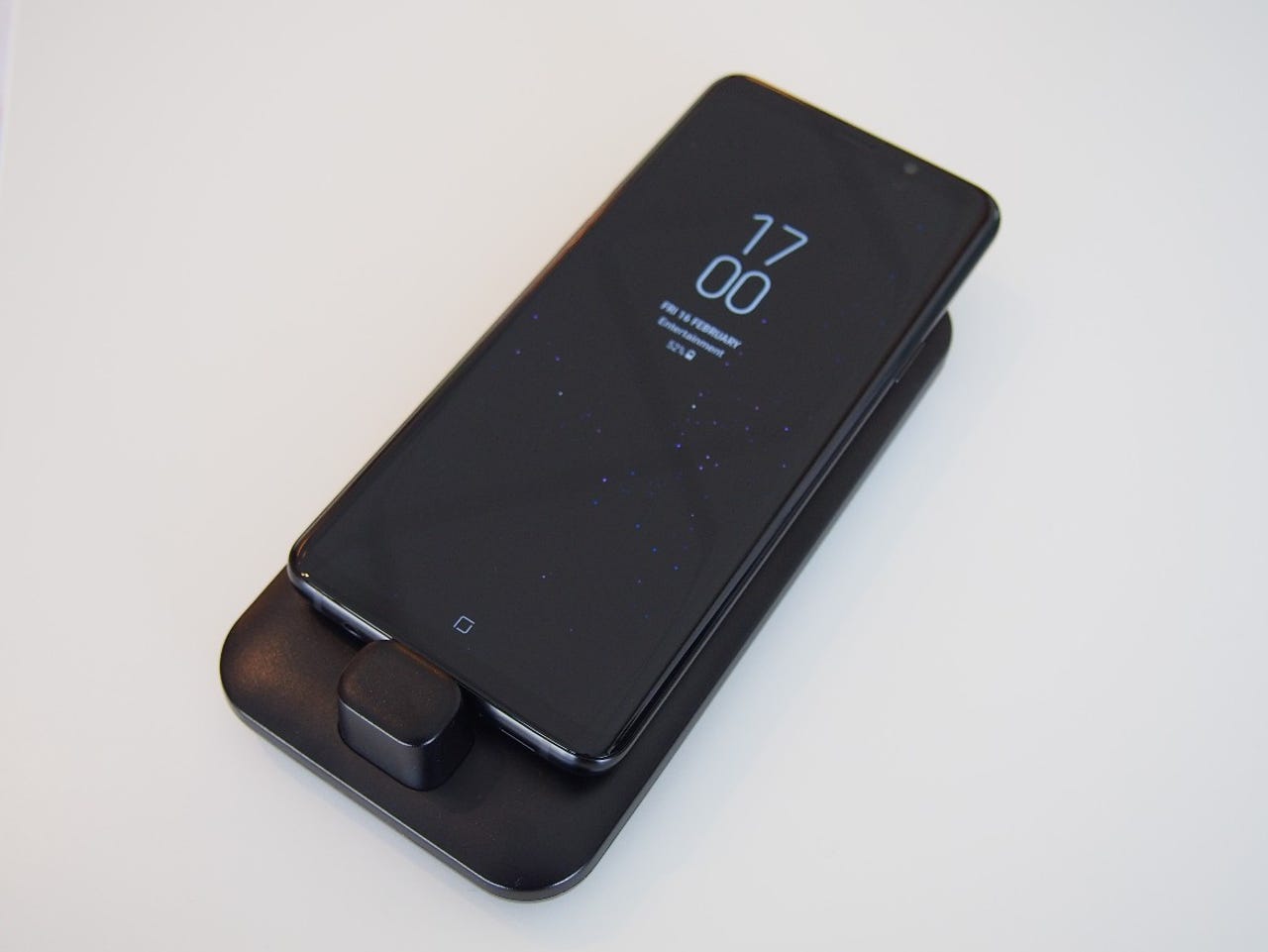Samsung DeX 2018: Software and hardware updates improve the enterprise experience


Last year Samsung launched the DeX dock solution with the Galaxy S8. Later in 2017 it improved the DeX experience with video conferencing support, Samsung Focus support, and more.
With the new Samsung Galaxy S9 and S9 Plus, we also receive improvements in DeX software and in hardware, the new DeX Pad. The DeX dock was an innovative solution, but positioned the phone at an angle so that sound was muted while it also required an external mouse and keyboard, in addition to power and HDMI connections.
See also: Samsung advances with DeX Pad and may just will it to success
Hardware hands-on
The new DeX Pad is an accessory that lies flat on the desk with a USB Type-C connector where your Galaxy S9, S9 Plus, S8, S8 Plus, or Note 8 are attached. There is a fan and vent inside the dock to manage heat during use. At the top edge of the DeX Pad you will find two USB Type-A ports, an HDMI port, and a USB Type-C port. Your Samsung device will charge up on the pad when you connect a USB Type-C cable to the pad.
There is a rubber strip along the pad where you can rest your Samsung device. Rubber feet are positioned on the bottom to keep the pad from sliding around. The pad is light and easily transportable.
Software hands-on
Samsung continues to improve the number of apps and performance of those apps with Samsung DeX. The DeX Pad supports up to 2K resolution and gaming demonstrations were impressive.
MWC 2022
I took the DeX dock on road trips last year, but having to carry cables, a keyboard, and a mouse made things a bit ridiculous where a laptop was a better choice.
A significant improvement in DeX this year is that the display of the mounted Galaxy device will turn into a virtual trackpad so that you can navigate the desktop interface on your display without any other connected input device. In addition, when you click into a field that requires text, a virtual keyboard will appear on the Galaxy display so you can enter text without having to connect an external keyboard. While I did test out the trackpad capability, the keyboard was not yet ready to go during the pre-briefing.
The trackpad and keyboard functions require Android 8 Oreo so current Samsung Galaxy devices will first need to receive that software update before they can take advantage of the latest in DeX technology.
Also: These are Google Android 8.1's five best features
IT departments will also appreciate that Knox Configure will be available for Samsung DeX. With Knox Configure, an assortment of DeX Pads can be setup and deployed for company use with standardized security settings.
Samsung's latest smartphones are powerhouses and with the DeX Pad we are moving closer to the reality of having a single computing device take care of the majority of our needs. Stay tuned for a review of the new DeX Pad solution.
Previous and related coverage
Google launches enterprise Android device recommendation program, omits Samsung
Samsung commits to foldable OLED phones for 2018
Samsung begins construction of $6 billion EUV semiconductor line
The new $6 billion line in Hwaseong will produce semiconductors under 7-nanometers for use in next-generation mobiles and servers when it begins operation in 2020.
Samsung, Qualcomm to make 5G chips with 7-nanometer process
Qualcomm's future Snapdragon 5G mobile chipsets will be manufactured using Samsung's 7-nanometer Low Power Plus (LPP) extreme ultra violet (EUV) process.